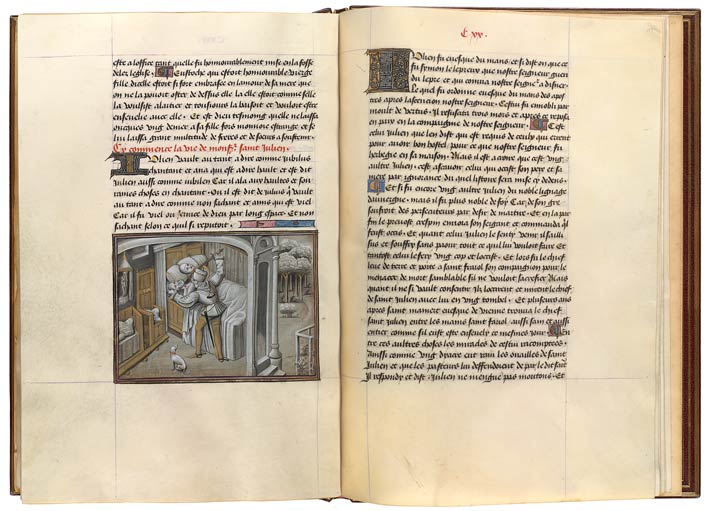
Julian slew his wife and her lover in bed, only to discover later that the people he killed were actually his parents. The saint is dressed in a man's elegant gown. Below a cinched waist, the gown flares into a skirt so short it barely covers his buttocks. Above the waist the gown expands, accentuating the torso. Tight pleats, gathered at the front and back, flatter the swelling forms of chest, back, and buttocks. Together, the pleats and padded shoulders create the flattering V shape of the masculine silhouette. Tall boots and slit sleeves accent the lean look.
Peacocks of the Midcentury
In 1435, during the final chapter of the Hundred Years' War, Duke Philip the Good switched sides and supported King Charles VII. By the following year, the English occupation of Paris ended. When Charles VII regained Normandy and Aquitaine in 1453, the long war was finally over. In the ensuing period of peace and prosperity, fashion revived.
These decades saw the last of the houpeland. It continued to be worn by men and women in provincial areas, but in France and Flanders it was appropriate only for formal occasions. Men more often wore the gown: full or knee length, belted at the waist. Over the course of these thirty years, men's gowns, via flaring pleats and ample shoulder padding, assumed a flattering, V-shaped silhouette. While the chaperon remained popular, new hats also arrived.
Women's gowns featured wide V necks with contrasting collars and partlets (plackards worn at the midriff). Headgear atop the temples continued to evolve, growing ever more extravagant. Burlets got thicker and climbed higher. Butterfly veils, supported by wires, floated like sails above ladies' heads.
